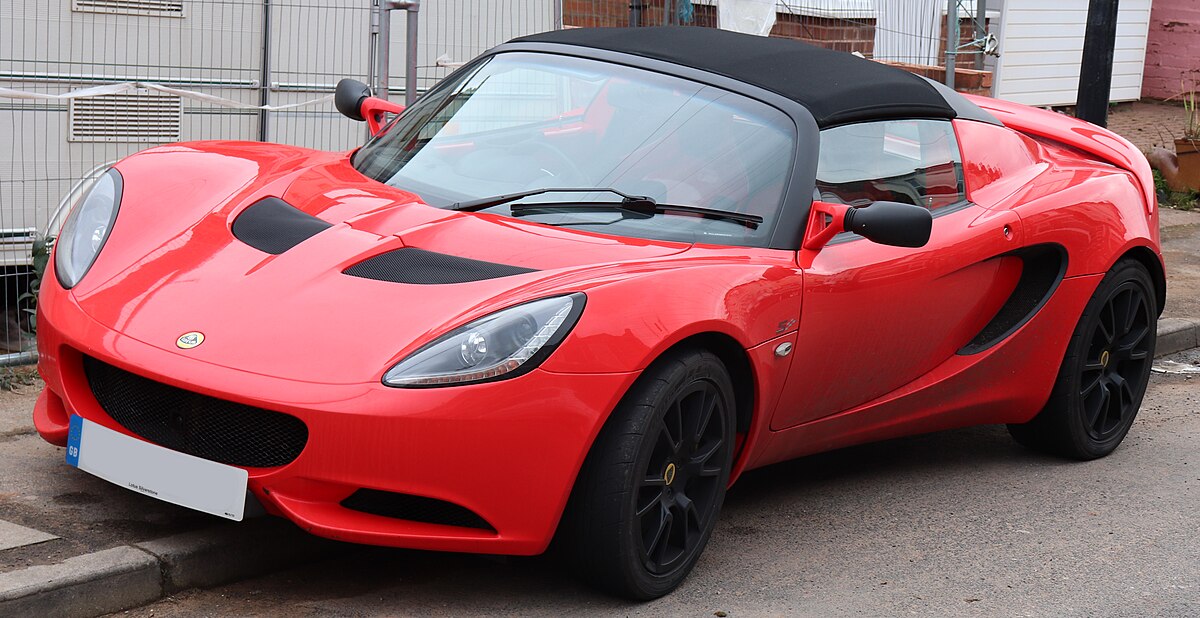A review of The Early Lotus Elise Series 2 Sports Car, covering development, important features, and technical data of this thirty-first model in the Lotus range.

In this article, I offer a nostalgic look at the Early Lotus Elise Series 2, one of an elite group of classic cars manufactured from 2000 to 2003.
The Lotus Elise Series 2
As a result of new European Directives concerning cars’ ability to withstand impact, the Elise Series 1 could not be produced in its present format beyond 2000.
READ MORE :
- The Business Of Betting Sports
- Flattening The American Internet
- How To Buy A Sports Bra
- The Presidential Election Recount Trend
- The Best Resorts For Skiing in South America
Accordingly, to fund the necessary development work, Lotus had to establish a new business partnership.
The outcome was that General Motors agreed to support Lotus, with the proviso that Lotus was to build forthcoming European Opel And Vauxhall sports cars using GM power plants and badges.
These GM-branded cars were built on the same production lines as the existing Lotus models until they were discontinued in late 2005.
In October 2000, the Lotus Elise Series 2 sports car was launched and consisted of a redesigned Series 1 unit incorporating a modified chassis to accommodate the new regulations.
It had a restyled interior and hood, lowered sills for easier access, uprated suspension, and an improved braking system.
In 2004, Lotus began replacing the Rover K-Series engine with the Toyota 2ZZ-GE, 1.8 liters, 4-cylinder, 16 valves, double overhead cam engine, with Variable Valve Timing.
A less highly tuned version was also available in the Toyota 1ZZ.
The smooth lines of the Elise Series 1 gave way to a more angular form of body styling in the Series 2 variant, which was available as Sports Tourer or Race Tech versions.
The Sports Tourer featured leather seats, fitted carpets, an audio system, and extra cabin storage.
The Race version had leather seats with carbon trim, drilled disc brakes, redesigned suspension, stiffer springs, and new dampers.
However, the standard Rover K-Series engine was retained from the Series 1, while a new Lotus engine management unit was added.
Fitted with a close-ratio gearbox, it developed 120 bhp and produced a top speed of 125 mph, with a 0-60 mph time of 5.6 secs and a 0-100 mph time of 17.5 secs.
In February 2002, air conditioning was offered as an optional extra, and a month later, the Cobra immobilizer system was now standard equipment.
Also, in March 2002, a new hardtop was introduced.
The Lotus Elise 111
Based on the Series 1 Elise 111 model, the Series 2 variant was introduced in June 2002.
It was powered by the 1.8 liters Rover K-Series Variable Valve Control (VVC) engine, fitted with a Lotus K4 engine management system, which developed 156 bhp at 7000 rpm and 129 ft/lbs of torque at 4650 pm.
This produced a 0-60 mph time of 5.1 secs. It used 16-inch front wheels and 17-inch rear wheels.
The Series 2 Lotus Elise 111S sports car was introduced that year, powered by the same 1.8-liter Rover K-Series VVC engine.
It was offered with either Sports Touring or Race Tech specifications, and both featured drilled disc brakes, different wheels, and metallic paint.
The Sports Touring variant included leather seats and trim and fitted carpets.
This variant was not fitted with a long roof and was discontinued in 2005.
The Series 2 Lotus Elise 111R, designed with an eye for the track, was powered by the Toyota 1.8 liter, 2ZZ engine.
Fitted with a six-speed gearbox, it developed 189 bhp, with a 0-60 mph time of 4.9 secs.
It used a new rear subframe, revised rear suspension, and servo-assisted ABS brakes that were track-tuned.
The Lotus Elise Sport 135
In January 2002, and the UK only, the standard Elise Series 2 received the Sport 135 engine upgrade, which included an aluminum inlet system, a stainless steel sports silencer, and a reprogrammed engine management system to improve power output. It was now referred to as the Series 2 Lotus Elise Sport 135.
This upgrade resulted in 135 bhp at 6200 rpm and 129 ft/lbs of torque at 4850 rpm, a top speed of 129 mph, with a 0-60 mph time of 5.4 secs and a 0-100 mph time of 14.9 secs.
In March 2002, this upgrade was offered to all Series 2 Elise owners and included an alternative gas flowed cylinder head but not a sports exhaust.
The Lotus Elise 135R sports car variantt was a track-orientated model with sports suspension, widerer whee, ls, and the same 135 bhp engine.
In some markets, the Elise 135R was substituted for the Sport 111, which was similar, except that the 135 bhp Rover K-Series engine was replaced by a VVC unit, developing 156 bhp.
The Lotus Elise Sport 111
With an emphasis on track use, the Lotus Elise Sport 111 sports car variant was launched in May 2003, targeting Australia and nearby countries, and was based on the Series 1 Elise 111, but with the following changes:
- Sports suspension
- Stiffer springs and dampers
- Anti-roll bar
- OZ 16 spoke wheels
- A grille matching the body-color
- “Lotus Sport 111” logos
It was powered by the 1.8 liter Rover K-Series VVC engine, which developed 156 bhp.
This marked the end of the Early Lotus Elise Series 2
Perhaps this stroll down memory lane might have answered, or at least shed light on, a possible question:
Which Lotus Sports Car is Your Favourite?
However, should this question remain unanswered, I will be reviewing, in some detail, in future articles within this website, the entire range of Lotus sports cars featured in the memorable era spanning 1952 to 1996.

